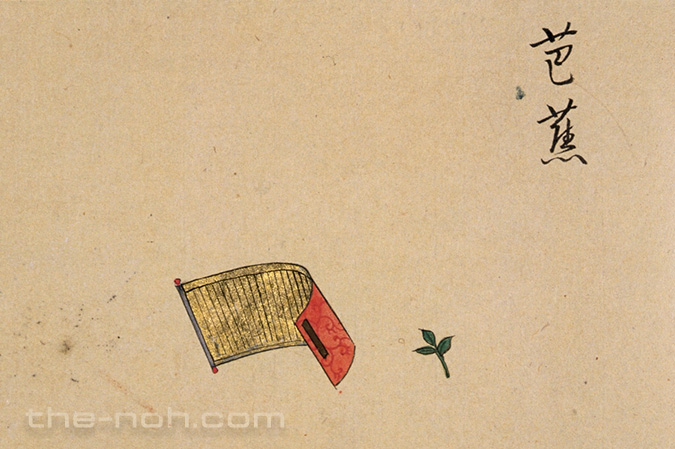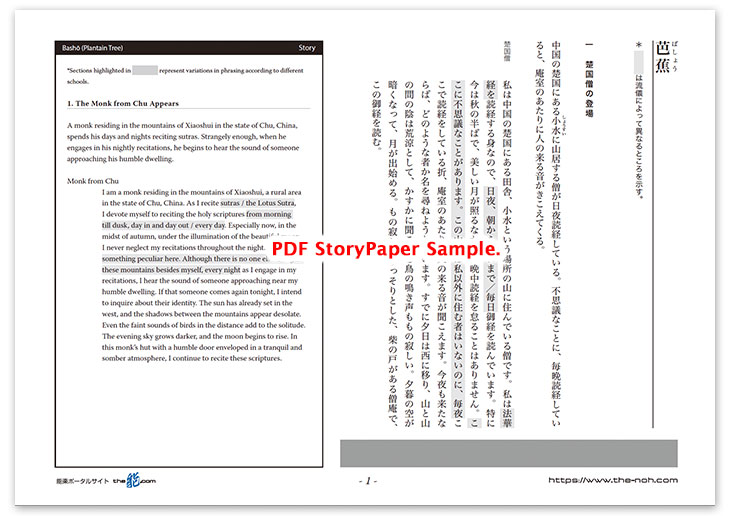
 Bashō (Plantain Tree)
Bashō (Plantain Tree)

![]()
Every night, a monk living in Xiaoshui in the state of Chu, China recites the Lotus Sutra at his humble hut. One night he hears someone approaching his place. In the light of the moon a woman appears. The monk asks who she is. She replies that she lives in Xiaoshui, visits the monk to connect with Buddha, and requests the monk to enter her into his hut. Although the monk declines her request at first, he ends up inviting her into the hut after seeing the seriousness of her wish. After talking about the merits of the Lotus Sutra as well as the reason of the Buddha’s teachings, she cites an old episode of the “Plantain Tree in Snow” and disappears, indicating that she is disguising her true identity.
As the monk hears the story about a plantain tree from a villager, he notices that the woman he met for a while ago was the spirit of the plantain tree. He recites the sutra all night. The spirit of the plantain appears before him and laments the fragility of themselves as well as the unstableness of this world. The spirit of the plantain tree dances in the moonlight and then it causes wind with its plantain leaf fan. When the mountain wind sweeps away the grasses and flowers around, a broken plantain leaf is left just there. .
![]()
This piece is based on the idea in the Lotus Sutra that “even plants without consciousness can attain buddhahood” from the “Parable of the Medicinal Herbs.” In the pensive and somber atmosphere of an old temple, a plantain tree transforms into a woman and talks about the transience of the world.
There are other Noh plays which have the spirits of plants appear, but what sets this piece as unique is the presence of a middle-aged woman, when Noh plays often cast women as either young or elderly. The fleeting image of a plantain tree, which does not bloom and is torn by the wind, overlaps with the woman’s figure. One of the highlights of the performance is the serene and dignified “Jo-no-mai”, which is performed with music but without the accompaniment of a large drum.
The story of “Plantain Tree in Snow,” in which artist Wang Wei (8th century) depicted a flourish plantain tree that should not grow in winter and snow together, is well-known. The kyōgen interlude that tells this story is also a delightful aspect of the performance.
STORY PAPER : Bashō (Plantain Tree)
Story Paper presents noh chant stories in modern speech, with story outlines, highlights and more using Adobe PDF format, which can print out and zoom in. Print out the pages and take them with you when you see the actual noh performance.

The copyright of Story Paper is held by the Noh.com. Story Paper is for individual use only. It is prohibited by the copyright law to distribute or publish printed-out Story Paper pages without prior consent. For more information, check the credit and disclaimer pages.



 [Bashō (Plantain Tree) : Story Paper PDF : 496KB
[Bashō (Plantain Tree) : Story Paper PDF : 496KB